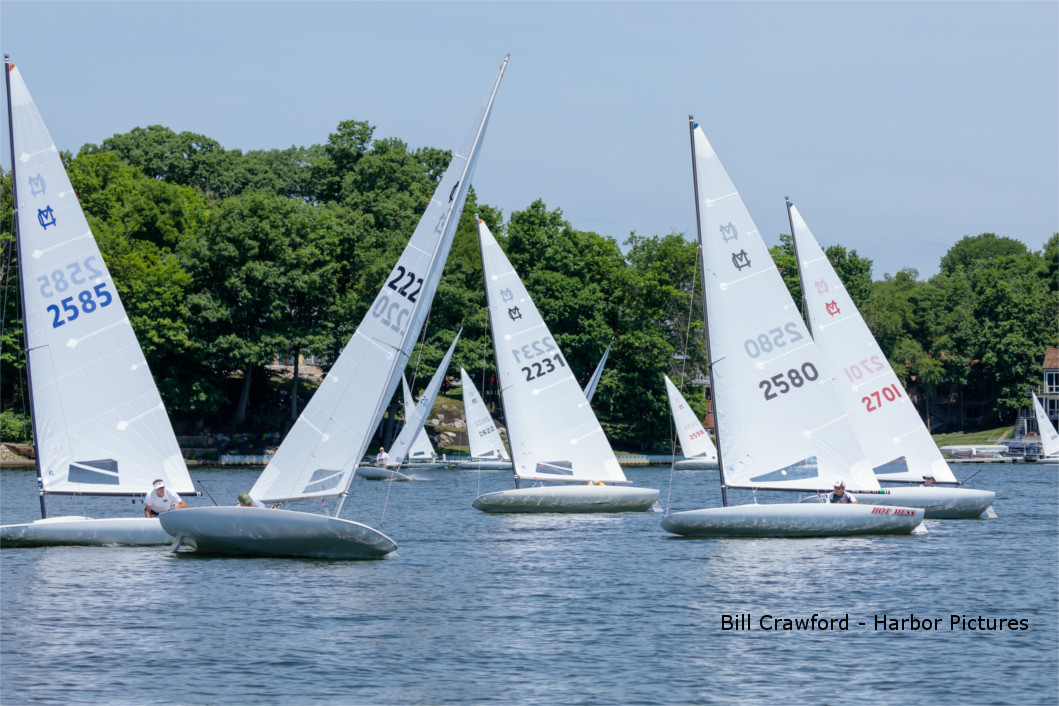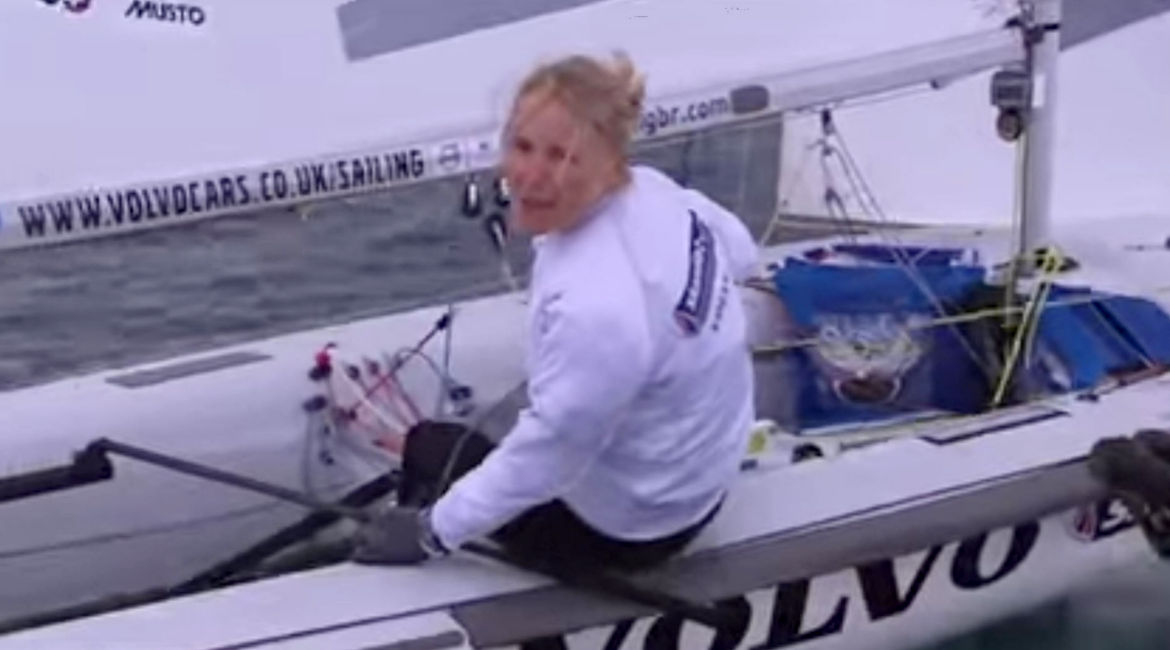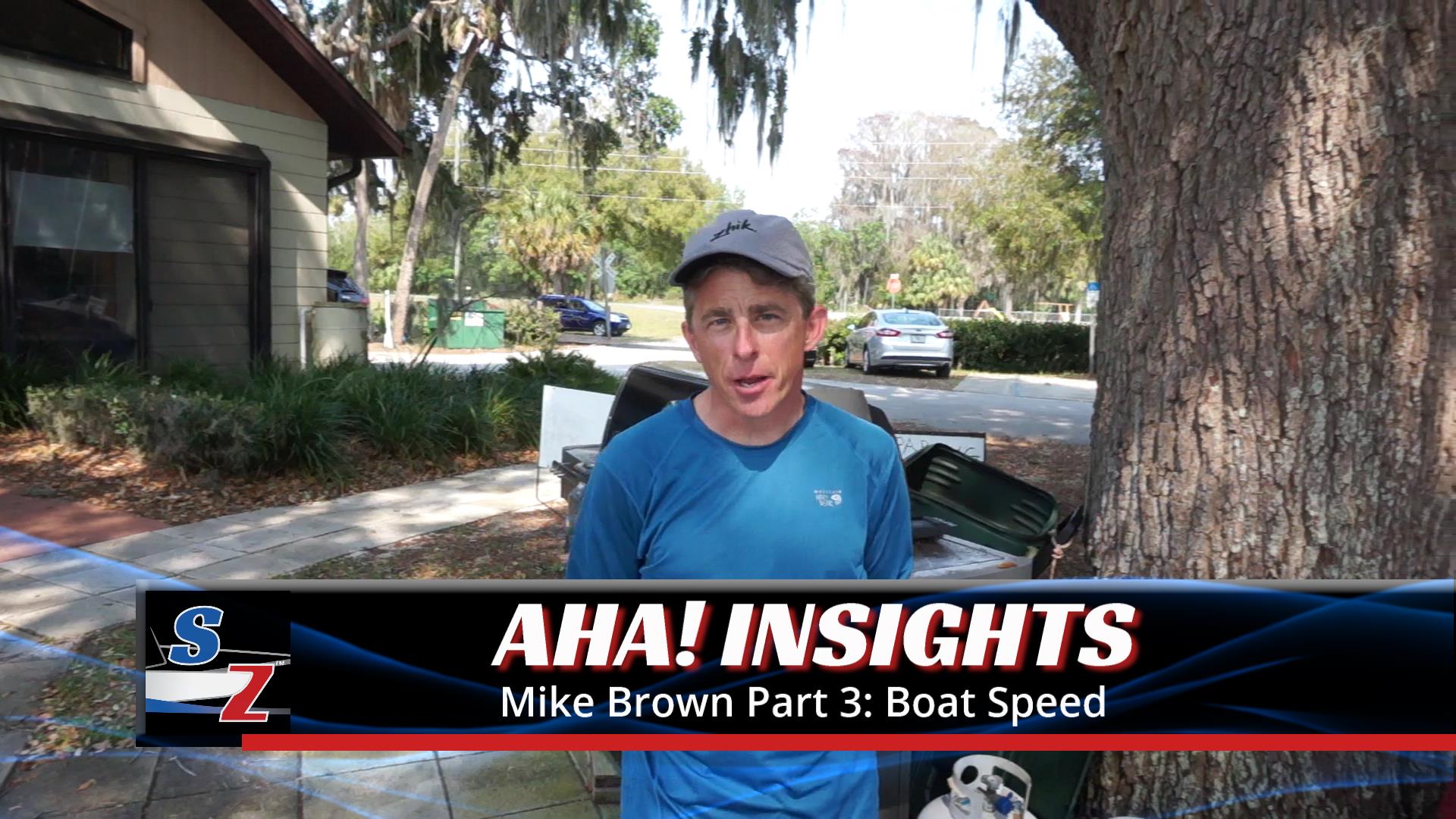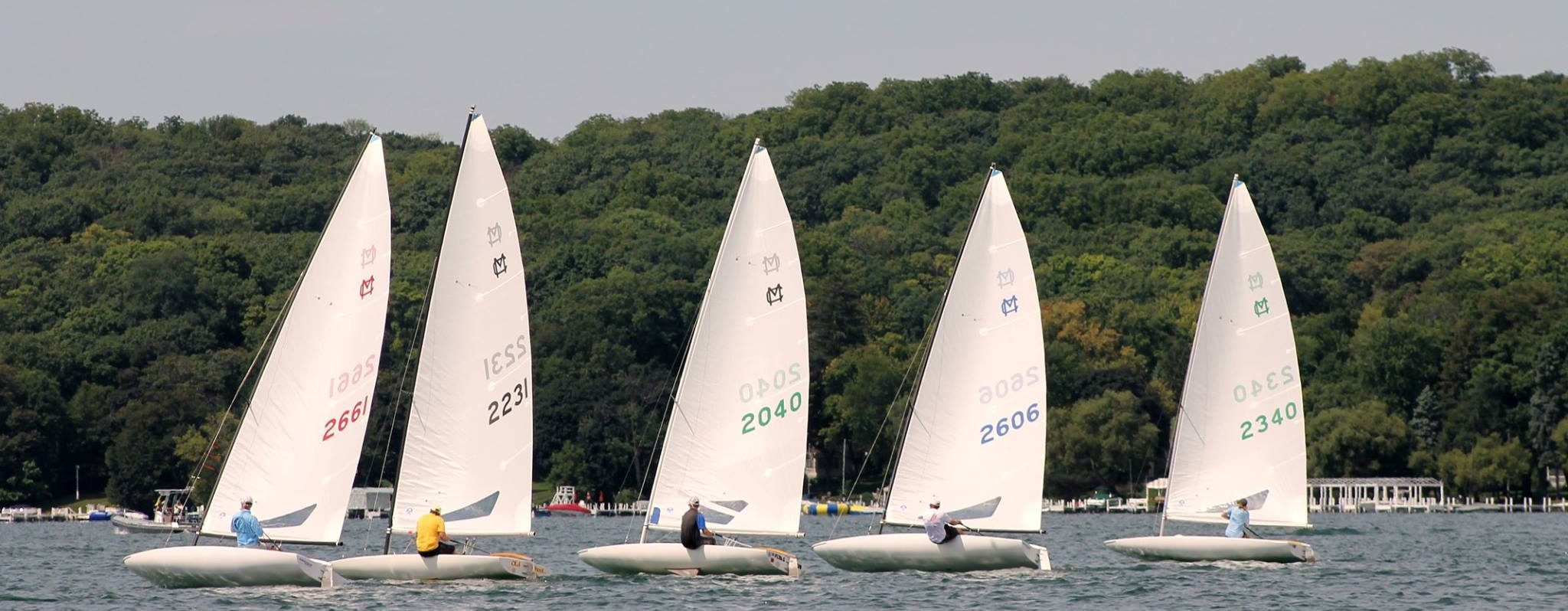A well-sailed boat can develop a great speed advantage; … so it is not unusual to see the largest race-winning leads developed in the lightest of conditions. Greg Fisher in When the Going Gets Light. . .
Sitting on the low side, trying to go fast in very light air can be very frustrating. Dave Perry confessed that, for him, the only good thing about sailing in light air is you can usually go barefoot. However, light air is inevitable, and getting good light air boat speed fast becomes easier if you concentrate on a few specific techniques to maintain flow.
In this post, we collect light air boat speed tips from top sailors. This post has been edited from its original version. We re-organized the material for clarity and added a number of tips from Frank Bethwaite, Greg Fisher, Roble/Shea Sailing, Dave Ullman, and others.
It’s all about flow
Air flow over the sails is paramount. Greg Fisher calls it “precious,” because it’s so difficult to develop and maintain in very light air. We’re looking for maximum flow and attachment to the sails.
Consider the effect of wind speed in light air. A two-mph increase in air flow over your sails from 4 mph to 6 mph more than doubles your sail power. Contrast that with an increase from 10 mph to 12 mph, which gives you only a 24% increase in sail power.
Flow doesn’t help unless it stays attached to the sail. In very light air, the wind separates easily from the sail.
The six steps to light air boat speed discussed below all revolve around creating and maintaining flow over the sails.
Six Steps to Light Air Boat Speed
#1. Use a flatter sail
A sail that is too deep won’t allow attached flow in very light air. In High Performance Sailing, Frank Bethwaite provides extensive data on sail performance. He recommends a camber of 8% for very light air.
If you have a fuller sail, you still have a few options:
- Tighten the outhaul to flatten the lower portion of sail.
- Increase mast bend with more spreader sweep.
- Let the boom out more so that the exit of the leech is not hooked to windward. Bethwaite recommends this for a full sail. This allows the air to exit the sail parallel to the boat centerline. You will give up some pointing ability but be more able to retain speed.
#2. Twist the sail and open the leech
You need twist because in very light air the wind is stronger and in a different direction at the top of the mast than at the bottom. Bethwaite suggests that you need as much as 25° of twist from the bottom to the top of the sail for wind speeds less than six knots.
Also, the exit of sail at the leech needs to be open to retain attached flow. In very light air, gravity will make the upper leech to hook to windward. Greg Fisher notes that you may not be able to get the top batten open enough to be parallel to the boom but at least make sure that it is not hooked past parallel to the centerline of the boat.
- Minimize downward tension on the boom
- Make sure the vang is loose.
- Sheet lightly. Turn the ratchet off and experiment with tension.
- Experiment with setting the traveler to windward. Make sure it goes back to center if the wind comes up.
- Experiment with techniques to raise the boom:
- Use a shoulder to raise the boom when sitting under it.
- Sheet by holding one part of the mainsheet up high or holding the boom directly. Bethwaite suggests this, although it may be impractical in many situations.
- Hike aggressively to leeward. This let gravity open the leech. However, don’t overdo it – too much heel makes the sails and foils inefficient. Sit as far forward as possible to keep the bow attached to the water (less wave-making resistance) and for more leverage (hiking from the widest part of boat).
- Adding cunningham tension may flatten the upper portion of the sail and open the leech. However, cunningham may also reduce power. Depending on your boat, opening the leech may still be beneficial.
- Use a top mast wind vane to check upper sail trim against the apparent wind. Roble/Shea sailing pointed out that their coach, Dave Ullman insisted they use a Windex, partly for this reason.
#3. Bear off to create apparent wind
Sailing close-hauled, the light wind can’t put enough force on the boat to accelerate it very much. You have to create wind – apparent wind – by reaching. To understand why this is essential, see the data from Frank Bethwaite in the More Information section.
- Bear off and ease the sails. Greg Fisher says to bear off more than you think you should, and then bear off five degrees more. Bethwaite suggests heading down until the masthead wind indicator points 20 degrees to windward compared to the top chord of the sail.
- Let the boom out well past the centerline of the boat.
- Check that all sail telltales are streaming.
- Wait for the boat to accelerate.
#4. Head up gently while trimming in
As you accelerate, the apparent wind moves forward, so you must trim in to compensate. Bethwaite points out that the apparent wind will be more forward at the deck than at the mast tip, so the boom gets trimmed in more than the top of the sail. Your speed will also allow you to head up to a smaller tacking angle.
- Sheet in to get the boom toward the centerline and keep all the sail telltales flowing. Head up as you sheet in.
- Maintain twist. Even with increased speed, you still need twist in very light air.
- Sheet in and head up only as far as the boat allows without reducing speed. Your goal is to retain the apparent wind you generated by reaching.
#5. React to changes quickly
Once you’ve generated boat speed and apparent wind, fight hard to keep it. Bethwaite points out that in very light air a boat may experience four changes in wind speed or direction every 60 seconds. If you don’t react to these changes, you will lose the precious speed gained and have to start over again with acceleration.
- In a lull, ease the main to maintain twist and keep the leech open. You don’t need to bear off yet. With the wind this light, it’s better to let your speed bleed off.
- When the wind returns, re-accelerate by turning down and keeping the sheet eased.
- Steer in response to changes in direction.
- In a puff, hike hard if needed, let the boat accelerate, then trim in and feather up.
- Use your indicators
- Leeward luff telltales should be streaming, perhaps breaking occasionally. Bethwaite recommends using these. Use very lightweight material – see the note about SailTales™ below.
- A forestay telltale provides a good “ballpark” reference when you are sitting on the low side. Place it low enough on the forestay so you can see it under the boom. In light air in an MC Scow, you are close to the groove when the forestay telltale is pointing just outside of the leeward sidestay. Use this as a first reference for steering and then adjust from there by feel and other indicators.
- Leech ribbons should stream periodically, indicating the leech is trimmed properly. However, in very light air the flow may not be adequate to allow these to stream.
#6. Minimize disturbances
Any abrupt movement of the sails will destroy the air flow, and it will take time to get it back.
- Sit still. When you have to move, do it gently.
- Minimize steering. Use body weight to help turn the boat.
- Make smooth adjustments with the mainsheet.
- Avoid tacking in the lightest winds. The rotation of the boat changes the apparent wind, making the jib stall and the mainsail luff. This effect is more pronounced and more detrimental to speed in lighter wind.
More Information
Data: why reaching is essential
When the boat is at rest or sailing very slowly, very little force can be generated by the lower half of the sails. For example, if the upper sails of a typical 14 foot dinghy enjoy 4 knots of apparent wind and the lower sails only 1.5 knots then the upper half of the sails can only develop about 4 pounds of force while the lower half can contribute less than one-half pound of force, despite its greater area.
But if this boat is accelerated by close reaching to a boat speed of 2 knots and then is pointed only as high as is consistent with maintaining 2 knots through the water, the apparent wind speed across the upper sails increases to about 5.5 knots and across the lower sails to about 3 knots. The total force developed will more than double compared with that available from an unaccelerated boat and this doubled force will give a boat speed increase of about 50%. … A boat that is pointed high from the outset can stabilize at some lower speed and will accelerate no further.
Frank Bethwaite, in High Performance Sailing
SailTales™
Sail telltales provide an accurate indication of the groove, especially for sailors that haven’t developed a well-tuned feel. In sloop-rigged boats, the helmsman steers by the jib tellltales. In cat-rigged boats, telltales placed 15-24″ behind the luff take the place of the jib telltales.
For sailors that use sail telltales to find the groove, light air poses a challenge. Typical yarn telltales don’t respond in very light air. Greg Fisher recommends unraveling yarn and using only the lighter strands.
SailZing makes SailTales – lightweight ribbons of fluorescent spinnaker cloth. The light spinnaker cloth responds well in the lightest of winds. The fluorescent color is visible from either side of the sail. The cloth is treated with a water repellent coating and a Teflon spray to discourage sticking.
Wind Shear and Gradient – more about why twist is important
SailZing sail trim series: Controlling Twist, Camber, Draft Shape and Position
Sailors Helping Sailors
Will you share your knowledge with your related Comments below?





